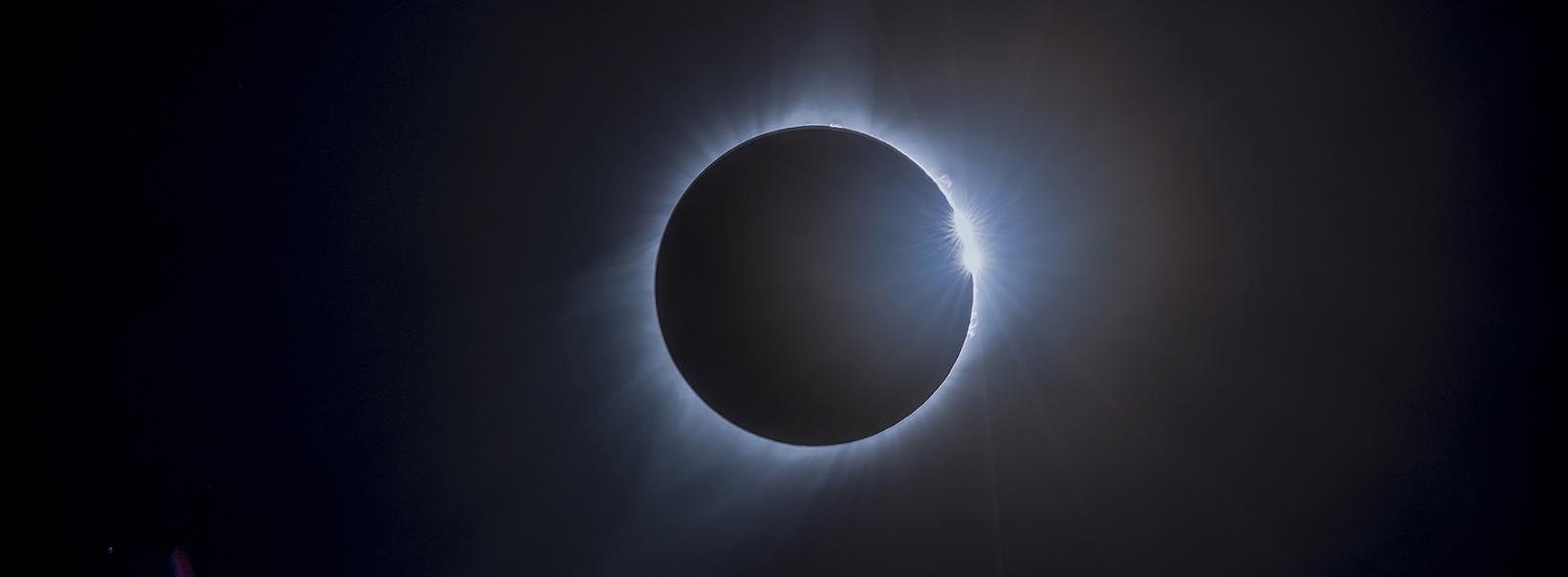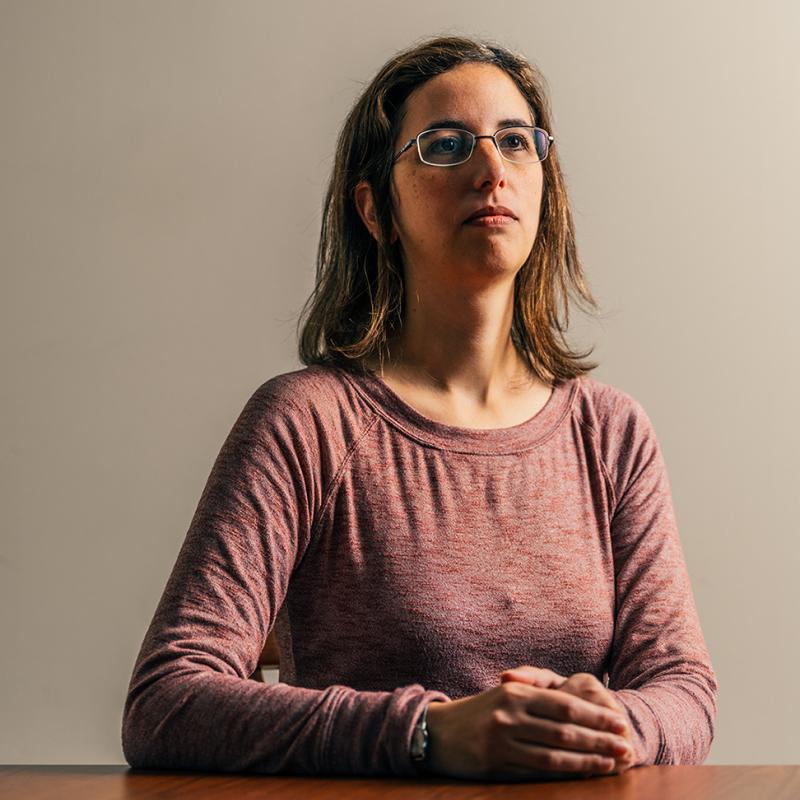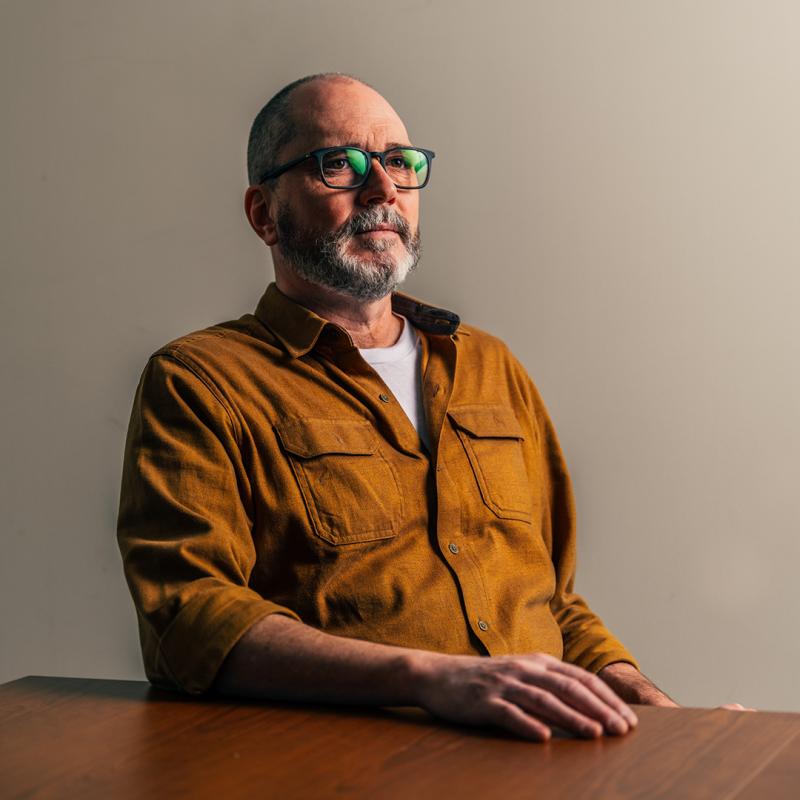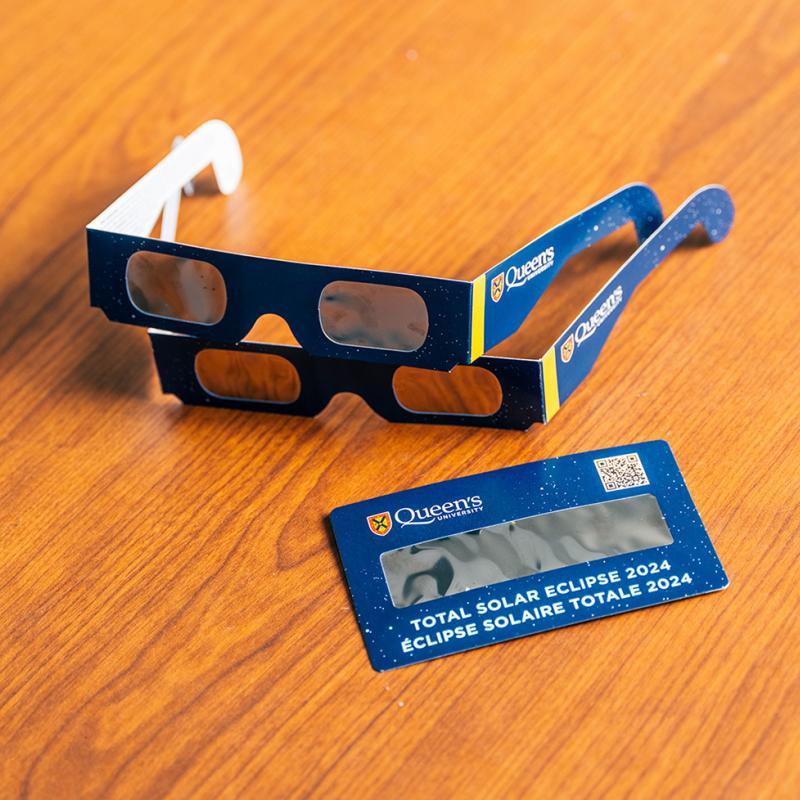She remembers the August nights of her childhood, when streaks of light from the annual Perseid meteor shower would rush across the sky.
Her family came from Hamilton, Ont., and its streetlights, but summer trips to Muskoka provided darkness, and a view of space.
Her father showed her meteors. Not even the mosquitoes could dull her enjoyment.
“In the city, if it was a clear night I would walk in the evening,” she recalls. “Even in winter, with my head looking up – to the point where you did have to worry about me brushing into things.”
Sarah Sadavoy still looks up. She has never seen a total eclipse of the sun, but April 8 will bring one to her in Kingston.
And what an eclipse it will be.
Darkening skies in Mexico, the U.S., and, later, Canada, the “Great North American Eclipse” has sparked plans for parties and festivals, hotel packages, and even a rodeo. At Queen’s, there will be special lectures, events, and collaborations across various faculties and research areas beyond astronomy. All for what the Canadian Space Agency is calling a “spectacular and rare celestial event.”
The solar eclipse’s path of totality in Canada will pass over Ontario, Quebec, New Brunswick, Nova Scotia, Prince Edward Island, and Newfoundland – and everywhere people in funny glasses will lift their gaze to try to catch a rare moment of astronomical perfection.
But why? Why are we so fascinated by eclipses, and what can they teach us about our world – and worlds beyond?
These are questions Dr. Sadavoy has often contemplated.
As an astronomer, she usually looks at parts of space so far off we have trouble comprehending the distance. On eclipse day, she will be looking at Earth’s own neighbourhood, our own solar system.
It still holds mysteries.
Dr. Sadavoy, an assistant professor in the Department of Physics, Engineering Physics, and Astronomy, studies how stars and planets form, research that carries her into the cold, dusty regions between existing stars – places called stellar nurseries. The unknown draws her in.
“I’ve always enjoyed the idea of seeing the unseen, or the unseeable,” she says. Ordinary light doesn’t show much in these regions, so the astronomer has to tease out images with other kinds of telescopes.
“I love a mystery. I love being able to solve a puzzle with just some of the pieces in place.”
And the sun?
“There’s a lot that we don’t actually know about the sun, and the sun is our best proxy to understand other stars. The sun is close enough to us: we can send satellites to it that monitor it; we can watch activity on the sun, and changes in the sun.”
These include violent happenings such as explosive bursts that hurl vast discharges of charged particles into space, sometimes disrupting communications on Earth and other times producing a beautiful aurora.
But satellites don’t tell the whole story.
“Solar eclipses let us see a side of the sun that we don’t always have the opportunity to see, which is [its] outer atmosphere,” she says.
The sun itself will be covered up by the moon on April 8. But its outer atmosphere will be in plain view.
Scientists can study the properties of this corona, but also study how it changes from one eclipse to the next, “because the corona itself is not constant. It changes.”
“These are snapshots in time, and we’re able to put this very complicated puzzle together.”
The story of eclipses is the story of human science itself.
The history of trying to understand how eclipses happen goes hand in hand with some of the earliest known discoveries in astronomy in Babylon nearly 2,000 years BCE.
By the first millennium BCE, “[people] start realizing that there’s a cyclicality to these things,” says Dr. Daryn Lehoux, who specializes in ancient sciences and the history and philosophy of science at Queen’s.
Long before computers, the Babylonians realized that lunar eclipses follow a pattern. They saw that lunar eclipses occur in a rigid cycle of 18 years, 11 days, and eight hours: each eclipse will follow the same pattern as the one 18 years earlier. True then, true now.
“Once you get that 18-year cycle down, that’s a really powerful mom-ent in the history of astronomy. Because you suddenly have mathematical control over eclipses. You can predict them,” says Dr. Lehoux.
He calls these Babylonian texts “one of these stunning mysteries in history” – early scientists who left their observations, but with no explanation of how they worked it out. We don’t know the extent of their mathematical knowledge.
Later came the Greek scientists, with a cosmology – Earth a sphere at the centre, and sun, moon, stars, and planets revolving around us. And the Greeks brought new mathematical tools.
“The Greeks introduce trigonometry in the second century BCE largely to deal with problems of astronomical observation,” he says.
There’s even a mysterious Greek device called the Antikythera mechanism, found somewhat broken in an ancient shipwreck in the Mediterranean, with gears and dials that appear to describe motions of our solar system. One of its faces computes the 18-year lunar eclipse cycle, with a separate dial to factor in the extra eight hours.
“It’s stunning because there’s nothing that complex for another 1,400 years,” Dr. Lehoux says. That’s when later Europeans developed mechanical clocks that can both tell the time and show the positions of all the visible planets. “They’re really more complex than what we have hanging on our walls … The gearing is just unbelievable … [Mechanical clocks] seem to just emerge almost out of a vacuum” in the 14th century – unless someone actually kept the ancient Greek Antikythera tradition alive for all those centuries.
He believes early astronomy, including eclipse studies, is a major foundation of all modern science because its mathematical nature “really provides a motivation for pursuing more and more systematized kinds of knowledge.
“And eclipse records give us a whole lot of refinement in astronomy, because the farther back you can look at … eclipse records, the more accurate you can be.”
Dr. Sadavoy can’t think of an ancient civilization that ignored eclipses.
“There is widespread notice of eclipses all over the [ancient] world. It was a big deal and they made records everywhere … The Mayans were phenomenal for this, and their records show that they absolutely watched the sky. They were very active in watching the sun, the moon, and Venus. They definitely knew when eclipses were going to happen,” she says.
The 18-year lunar eclipse cycle appears in Mayan records as well – thousands of kilometres from where the Babylonians found the same pattern.
On eclipse day, Dr. Sadavoy and her students will be somewhere outdoors as “eclipse ambassadors” from Queen’s, helping the public get a safe look at the show. Queen's and the Royal Military College of Canada have bought 150,000 pairs of solar glasses and hand-held viewers so that everyone in the city can have a look. The Royal Astronomical Society of Canada is also making plans for outreach.
“What I’m picturing is myself and a crowd of people I’ve never met before enjoying an eclipse together,” she says. “This is the first time an eclipse is coming to me and I’m super excited for it. I have seen partial eclipses, but I’ve never seen a total eclipse.”
Can’t look up safely? Dr. Sadavoy suggests looking down instead to see the sunlight coming through a tiny hole and making an image of the sun on the ground.
“You don’t even need fancy equipment. You can grab a colander [and watch the light shining through its holes]. You can make a pinhole projector [paper with a tiny hole]. And you will see the shape of a crescent sun, which looks different from a crescent moon.”
“You can live an entire lifetime and never see a solar eclipse, or at least a full one,” says Dr. Lehoux. He was surprised by his last, a partial eclipse in 2017, as he was canoeing in Algonquin Park, when people nearby started looking up and pointing. He used a hole in his hat to project the image of a crescent sun on the bottom of his canoe.
“To have [daylight] kind of go away for an hour in the middle of the day – it’s dramatic, it’s weird, it’s neat, it’s interesting, it’s alarming, it’s all kinds of things,” he says. “The whole campus is excited by the fact that we’re going to get totality. And Kingston has got a long tradition of alumni coming back for Homecoming. I think this is going to be a really interesting event.
“And that it’s happening on the last day of classes – it’s extra fun.”
Want to learn more about the eclipse? Get info about events and activities, safety, accessibility resources, and more on a special site by the Department of Physics, Engineering Physics, and Astronomy.



